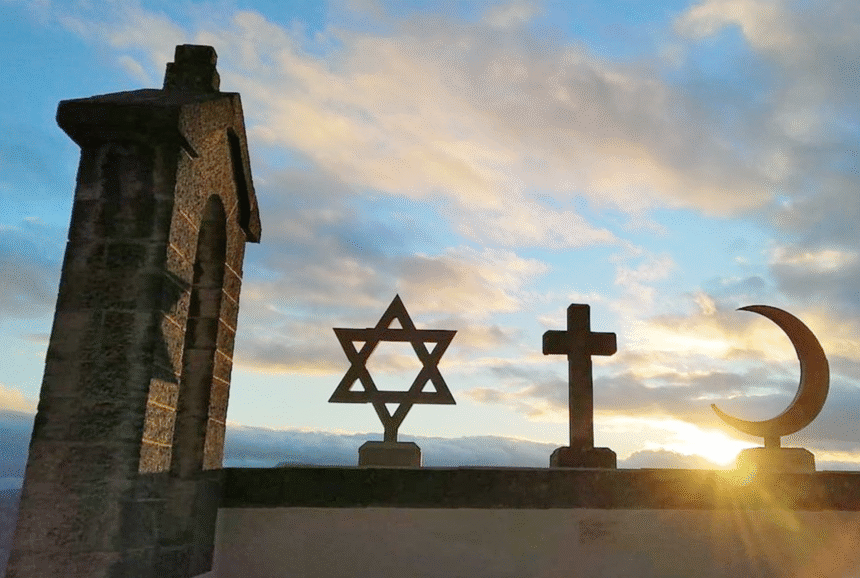Christianity remains the world’s most widely followed religion, with 2.4 billion followers worldwide. It has kept this status for centuries. Despite many predictions that it would fade in today’s more secular society, Christianity continues to grow, especially through the Catholic Church’s influence and surprising staying power in Western countries.
Challenges remain, such as tensions connected to Muslim immigration in the West, where conversations over integration and conversion to Christianity often spark debate. This article looks at the reasons for Christianity’s ongoing dominance, the Catholic Church’s reach, its growth in Western nations, and the impact of Muslim migration on religious freedom.
Christianity’s Place in the World
Pew Research Center reports that Christianity makes up about 31% of the world’s population. This far exceeds Islam (1.9 billion), Hinduism (1.2 billion), and other religions. Christianity’s strength comes from its long history, focus on sharing its message, and its ability to adapt.
The religion started in the Middle East and soon spread across Europe, the Americas, and Africa, helped by explorers, empires, and missionaries. Its broad reach across continents helps it stay strong. European Christian numbers have dropped, but places like sub-Saharan Africa and parts of Asia are seeing rapid growth.
The central message of Christianity—salvation in Jesus Christ—continues to attract people from many cultures. The Catholic Church alone counts 1.3 billion followers. Protestant churches, especially Pentecostal groups, add to this growth.
Their focus on personal experience and energetic worship draws in millions, especially in the Global South. Western countries, once seen as turning away from faith, are seeing Christian communities renewed through both immigration and renewed interest in church life.
Growth of the Catholic Church Worldwide
The Catholic Church is at the heart of Christianity’s global spread. Pope Francis and the Vatican have focused on helping Catholic communities grow in places like Africa and Asia, where numbers are rising fastest.
Since 2000, sub-Saharan Africa’s Catholic population has grown by 20%, thanks to high birth rates and new converts. Countries such as Nigeria and the Democratic Republic of Congo now have some of the world’s largest Catholic groups, with more young people joining seminaries and new church areas being created.
In Asia, the Catholic Church faces more resistance, but still finds ways to grow. The Philippines remains a strong base, with 80 million Catholics. In India and Vietnam, numbers are also rising.
Even in China, where religion is tightly controlled, millions belong to unofficial Catholic groups. The Vatican’s 2018 agreement with the Chinese government, which allows the state to help appoint bishops, shows a practical approach to increasing influence in challenging environments.
The Church’s reach is not just about numbers. Its charities, such as Caritas and Catholic Relief Services, offer education, healthcare, and help in disasters. These services are often the first contact for people looking for support, and sometimes lead to new conversions, especially in places where basic services are rare.
Still, the Church must deal with its scandals and increasing competition from evangelical churches, which often appeal to younger people in cities and use less formal structures.
Christianity’s Renewed Strength in the West
Western countries have long been seen as moving away from organized religion. Yet, Christian groups are showing signs of new growth. In the United States, evangelical and non-denominational churches are attracting younger people searching for meaning.
A Gallup poll in 2024 found 68% of Americans still identify as Christian, with evangelical church attendance up by 5% since 2010. Immigration from Latin America and Africa is also helping Christian communities grow, as Hispanic Catholics and African Pentecostals bring fresh energy to parishes and congregations.
Europe, often painted as highly secular, is also seeing shifts. In the UK, African and Caribbean churches are bringing new life to cities, with London’s Pentecostal churches growing by 15% over the last ten years.
In France, more people are returning to traditional Catholic parishes, sometimes as a response to secular values and a renewed interest in Christian heritage, especially among younger conservatives. Poland remains a stronghold, with 87% of its people identifying as Catholic and regular church attendance unchanged.
However, this growth is not the same everywhere. Mainline Protestant churches, like the Episcopal Church in the US and Lutheran churches in Scandinavia, continue to lose members, sometimes shrinking by half since the 1990s.
Secular attitudes, atheism, and lack of interest are real issues, especially among long-time residents. Still, new arrivals from Christian countries and lively charismatic movements show the roots of Christianity in the West are stronger than some might think.
Issues Linked to Muslim Immigration and Integration
One significant issue for Christianity in the West is the arrival of Muslim immigrants, whose numbers have grown quickly in recent years. European countries, in particular, have seen tensions rise over cultural and religious differences. In Germany, where the Muslim population has reached 6 million, disputes over public religious symbols or gender roles have led to arguments about integration.
France, which has Europe’s largest Muslim community, introduced an “anti-separatism” law in 2021 aimed at encouraging Muslims to accept French values, including religious openness.
Integration is a complex topic. Many Muslims become part of Western society and add to its culture and economy. But some communities, especially those with more conservative views, sometimes have difficulty finding common ground.
In Sweden, for instance, some neighbourhoods have kept sharia-based customs, raising concerns among local officials. The European Union Agency for Fundamental Rights found in 2023 that 30% of Muslim immigrants in Europe felt separate from the wider society, mainly due to religious differences.
Christian leaders try to encourage dialogue, but worries remain. Some Christian groups feel Muslim immigrants are reluctant to embrace religious diversity. Attacks on churches in France and Belgium, even though not always linked to Muslim groups, have increased concerns about losing cultural identity among Christians.
Islam’s Approach to Conversion and What It Means
Another point of friction is the matter of religious conversion. In many countries where Islam is the main religion, leaving Islam for Christianity or another faith is not only frowned upon but also illegal. Traditional Islamic teachings often treat apostasy harshly, with punishments ranging from isolation to jail or worse in countries like Saudi Arabia, Iran, and Pakistan.
In more moderate places like Egypt, people who convert to Christianity may face harassment, job loss, or rejection by their families.
This creates a clear difference in religious freedom. In Christian-majority countries, Muslims are generally free to practise and share their faith, but this is rare in Muslim-majority nations. In Europe, this has led to claims of a double standard in interfaith relations.
Missionaries who used to be active in Muslim countries now face severe restrictions, making it hard for Christianity to gain ground. For example, in Turkey, a nominally secular state, those who convert to Christianity can face bureaucratic hurdles, like trouble getting identity documents.
In Western countries, conversion remains a sensitive subject. Some Muslim immigrants see church outreach as an attempt to undermine their beliefs, while Christian groups argue that the right to change religion is a basic part of a free society. There have been notable cases, such as Iranian converts in Sweden. In 2024, Sweden granted asylum to 1,200 Iranians who converted to Christianity, as they risked punishment if sent home.
The Future of Christianity Worldwide
Christianity’s status as the world’s biggest faith looks set to continue, helped by its global reach and structured institutions. The Catholic Church’s steady growth in Africa and Asia and signs of revival in the West offer a strong counterpoint to predictions of decline. Yet the religion faces challenges from secular trends, internal disagreement, and friction with Muslim communities.
The Catholic Church will need to balance its traditions with the need to adapt, address scandals, and continue its charity work. In Western countries, building relationships with Muslim communities and protecting religious freedom will be essential. As migration changes the social make-up of many countries, Christianity’s ability to help bridge cultural gaps while holding onto its main beliefs will shape its influence in future years.
In a world filled with many beliefs, Christianity’s message of hope and redemption still attracts many. Its growth, ongoing challenges, and ability to adjust show that, even after 2,000 years, it remains a major presence worldwide.







